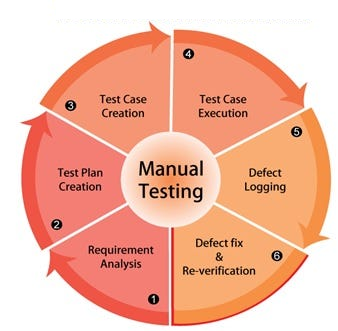
Manual testing plays a pivotal role in the software development life cycle, serving as a crucial phase to guarantee the quality and reliability of a product before it reaches end-users. Even with the increasing prevalence of automated testing, the significance of manual testing persists. This phase enables testers to thoroughly explore and validate different aspects of the software. In this blog, we will delve into the essential steps involved in manual testing.
- Understanding Project Requirements: Prior to commencing testing, it is essential to thoroughly comprehend the project requirements. This entails a comprehensive review of the software specifications, user stories, and any other pertinent documentation. This process ensures a deep understanding of the application’s functionality and expected behavior.
- Developing a Detailed Test Plan: Create a comprehensive test plan that delineates the scope, objectives, resources, schedule, and testing approach. Clearly define test cases, scenarios, and the criteria for test completion. This phase ensures that the testing process is well-organized, efficient, and in alignment with project goals.
- Developing a Detailed Test Plan: Create a comprehensive test plan that delineates the scope, objectives, resources, schedule, and testing approach. Clearly define test cases, scenarios, and the criteria for test completion. This phase ensures that the testing process is well-organized, efficient, and in alignment with project goals.
- Preparing the Testing Environment: Set up the testing environment by installing required software, configuring hardware settings, and ensuring system stability. This step is crucial to replicate real-world conditions and simulate the environment in which the software will be utilized.
- Executing Test Cases: Execute the test cases in accordance with the test plan. During execution, document the results, including any deviations from expected outcomes, defects, and encountered issues. Rigorously validate the functionality, usability, and performance of the software.
- Documenting Defects: When defects are identified during test execution, record them in a defect tracking tool. Provide comprehensive information about the issue, steps to reproduce, and any supporting documents. This data is essential for developers to comprehend and address the problems effectively.
- Performing Regression Testing: Following defect resolution, conduct regression testing to confirm that the changes do not negatively affect existing functionalities. Re-execute the previously run test cases and validate that the modified code seamlessly integrates with the rest of the system.
- Compiling Test Summary Report: Upon completion of testing and the execution of all test cases, generate a comprehensive test summary report. This report should encompass information about testing activities, test coverage, identified and resolved defects, and an overall evaluation of the software’s readiness for release.
- Sharing Testing Insights: Share the insights acquired during testing with fellow team members, fostering collaboration and knowledge transfer among developers, business analysts, and other stakeholders. This exchange is crucial for ongoing improvement within the development team.
- Collecting Feedback: Collect feedback from both the testing team and stakeholders to pinpoint areas for improvement in the testing process. Utilize this feedback to refine test cases, enrich test coverage, and streamline testing procedures for upcoming projects.
Conclusion:
Manual testing is a methodical and comprehensive process that is instrumental in delivering top-notch software. By adhering to these steps, testers can guarantee that the software aligns with specified requirements, is devoid of critical defects, and offers a positive user experience. Despite the advantages of automation, the human touch in manual testing remains irreplaceable, as it excels in identifying nuanced issues and ensuring a holistic evaluation of the software.
Digital Marketing Manager at Cotocus